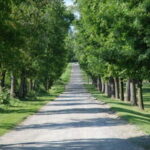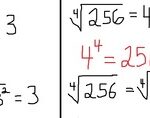Bamboo provides an unmistakable presence in the garden, and for an asian or tropical look, it is a necessity. The problem with many bamboo species is their invasive potential. Planted too close to a house foundation, a driveway, or a sidewalk, they can cause a tremendous amount of damage in a short time. Installing a bamboo barrier system can be labor intensive, time consuming and expensive. Planting ‘clumping’ or non-invasive bamboo is the answer.
The main difference between clumping and spreading bamboo is their respective root systems. Clumping bamboo has pachymorph roots, meaning they expand outwards very slowly from a central clump. Spreading bamboo is a leptomorph, indicating buds and growth nodes on every root section, which is what creates the problem. Clumping bamboos are just as beautiful as their larger and more aggressive relatives, and even easier to care for.
Fargesia robusta is a clumping bamboo growing to fifteen feet tall with unusual and attractive culm sheaths.The sheaths are a papery covering between the nodes that fade with time to give each culm an interesting striped appearance. The canopy is dark green and higher than most clumping bamboos, allowing a good view of the canes. Fargesia robusta is hardy to at least four below zero. Colder temperatures will cause some foliage and cane dieback, but there will be new growth in the spring. Overall, it is hardy from zones 7-9, but could do with some afternoon shade in very hot and humid zones.
Fargesia nitida gives a more bushy, ferny appearance, with its dense foliage. The canopy can be pruned up to reveal the culms, which turn a slight purplish color in sun. This bamboo makes a great well behaved hedge, growing to 12 feet. It is also more cold hardy than the other clumping bamboos, happily growing in zones 5-9.
Chusqea culeo is another variety with decorative culm sheaths. Pale green culms gain a reddish blush in fall, with the sheaths turning a dark, almost black color. Chusqea is only hardy to about zero, although there are several cultivars with varying hardiness. This bamboo can reach almost twenty feet tall, and is good for zones 7-9.
Clumping bamboos are easy to grow. Most prefer full sun, with afternoon shade in the hotter areas. To accelerate growth, provide rich planting soil and liberal amounts of nitrogen rich fertilizer, such as composted steer or chicken manure. Ample water should be provided as well. Growth will be slow the first few years, but after the fourth year a definite ‘grove’ will be achieved. Although these bamboos will tolerate clay soil as long it is not waterlogged, it will have an impact on the speed of growth.




